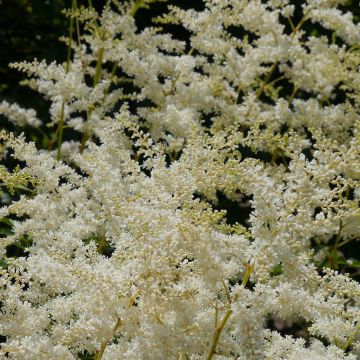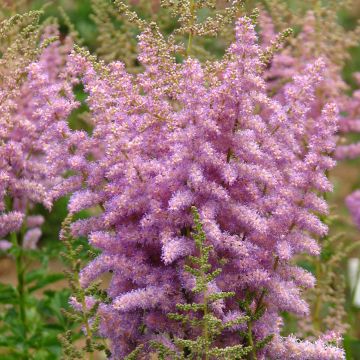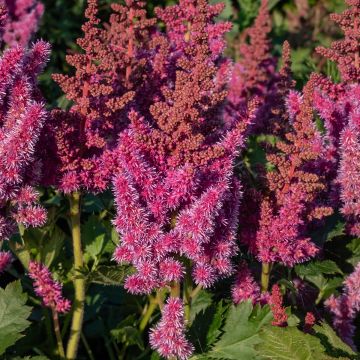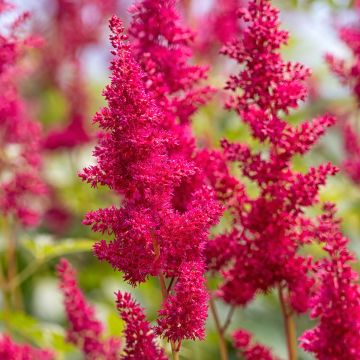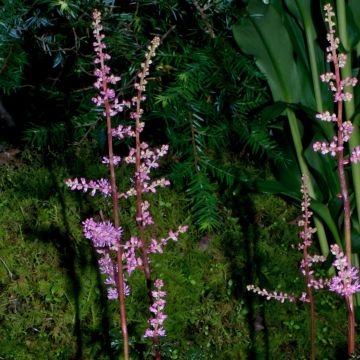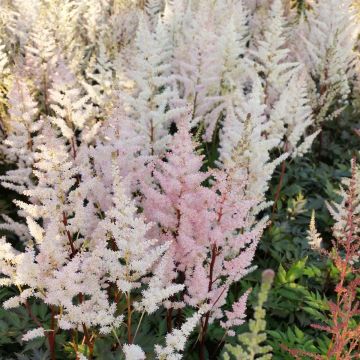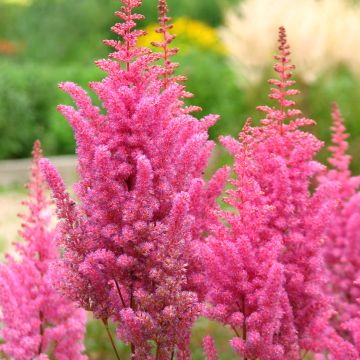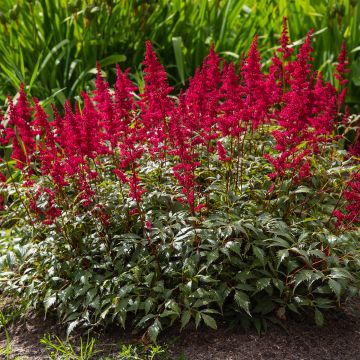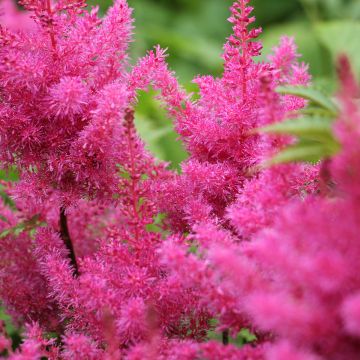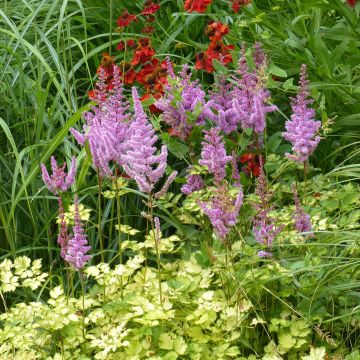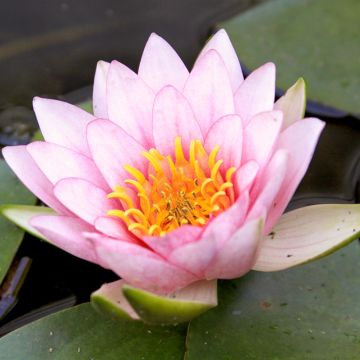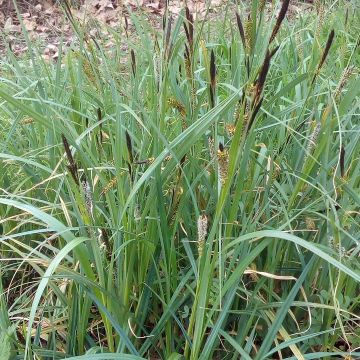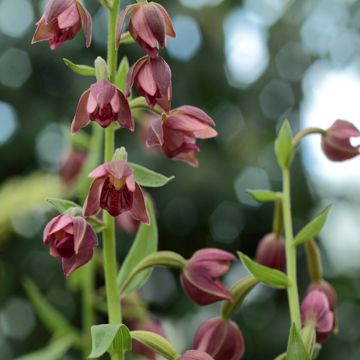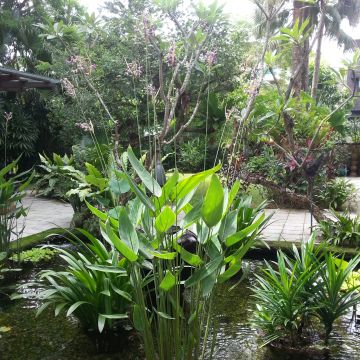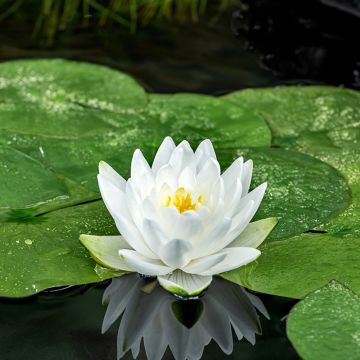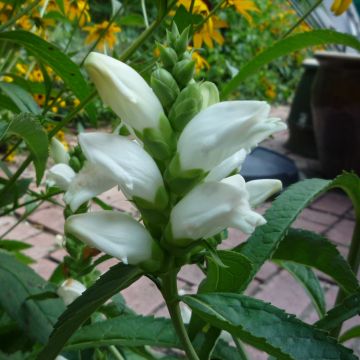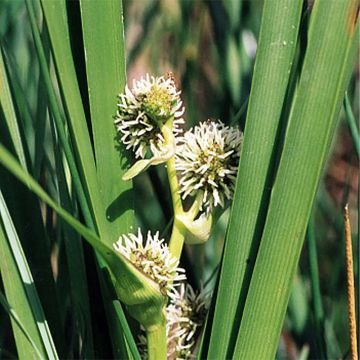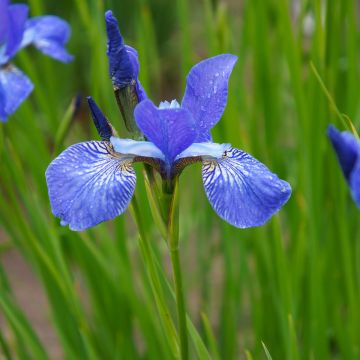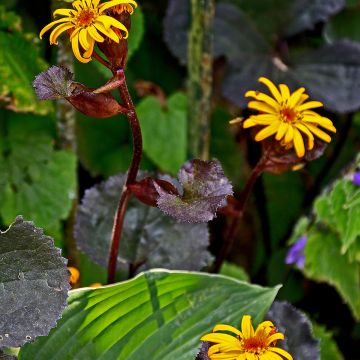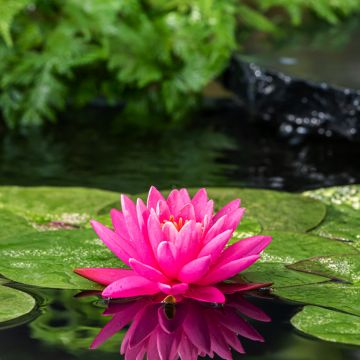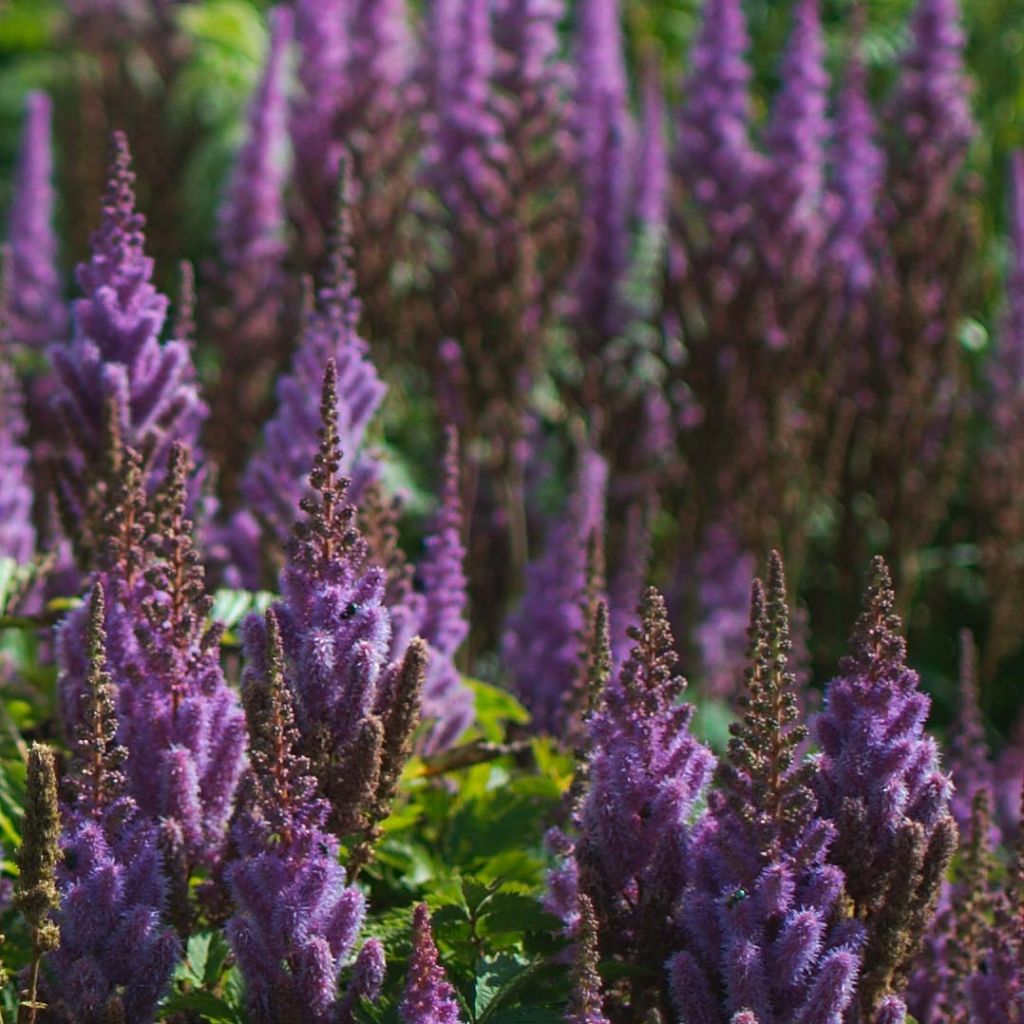

Astilbe chinensis var. taquetii Purpurlanze
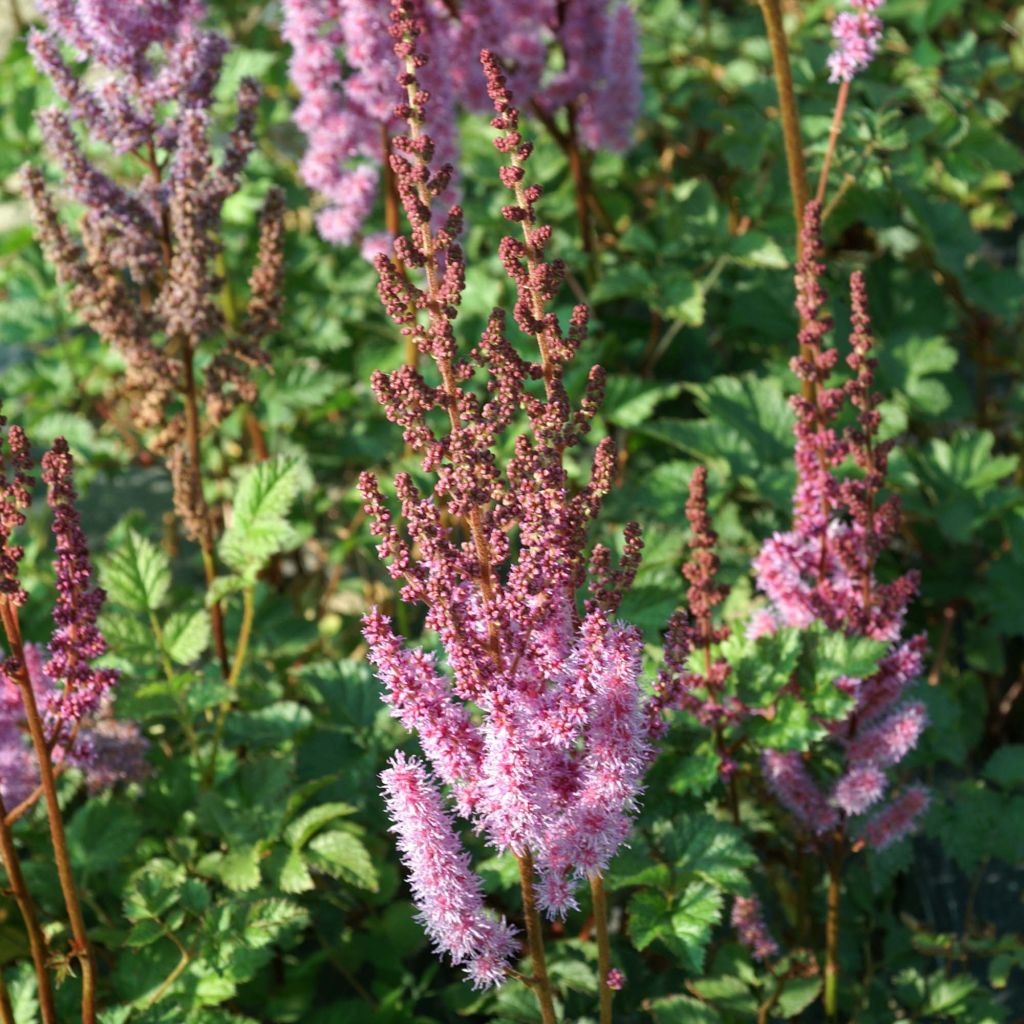

Astilbe chinensis var. taquetii Purpurlanze
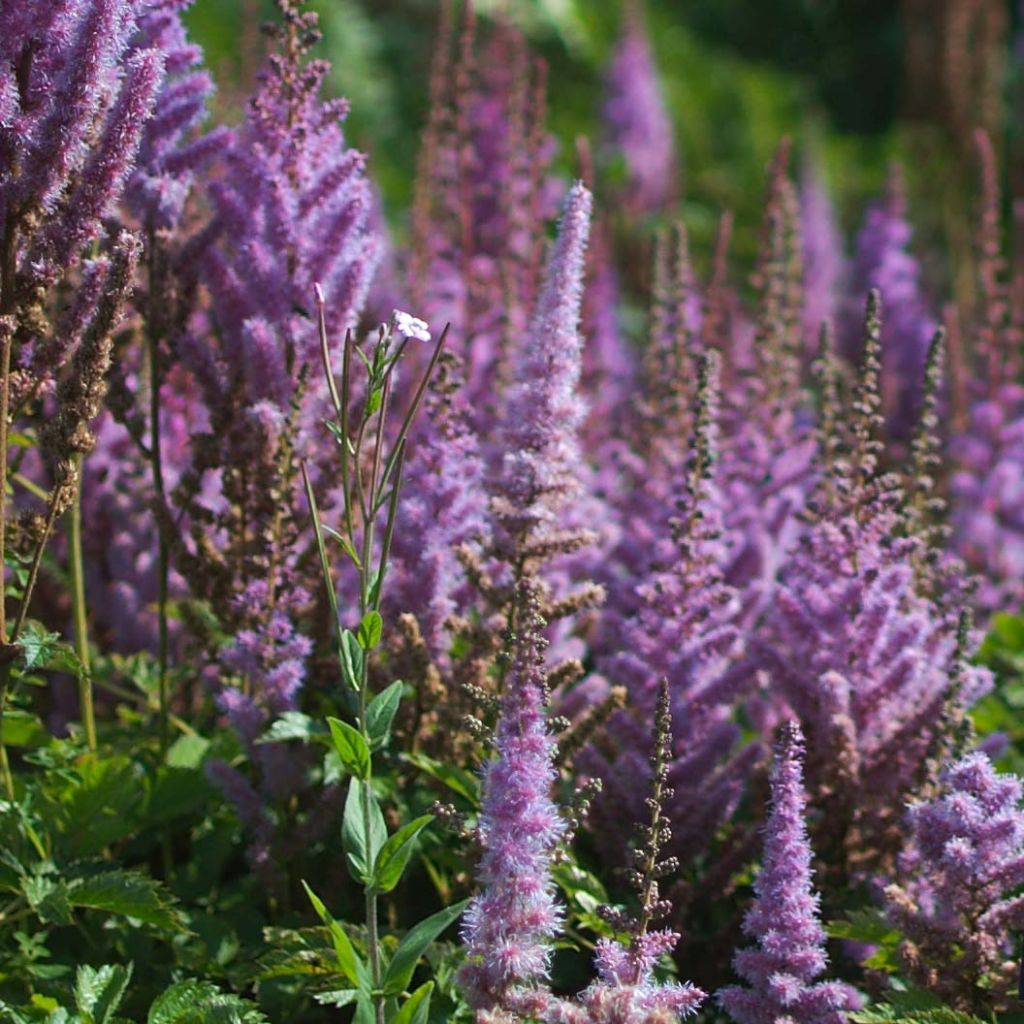

Astilbe chinensis var. taquetii Purpurlanze
Astilbe chinensis var. taquetii Purpurlanze - Chinese Astilbe
Astilbe chinensis var. taquetii Purpurlanze
Chinese Astilbe, False Spirea
This item cannot be shipped to the selected country
Delivery charge from €5.90
More information
Schedule delivery date,
and select date in basket
This plant carries a 12 months recovery warranty
More information
We guarantee the quality of our plants for a full growing cycle, and will replace at our expense any plant that fails to recover under normal climatic and planting conditions.
From €5.90 for pickup delivery and €6.90 for home delivery
Express home delivery from €8.90.
Does this plant fit my garden?
Set up your Plantfit profile →
Description
Astilbe chinensis var. taquetii Purpurlanze is a variety of Chinese Astilbe that surpasses the type species in terms of the height of its flowering, the superb carmine purple colour of its large flower plumes, and its vigorous growth often tinged with mahogany on the young leaves. Like all astilbes, it is an essential perennial for ornamental planting in compact, heavy, wet, and marshy soils. It is very hardy, never gets sick, and lives for a long time in the same place. In addition to its spectacular flowering, this Purpurlanze variety has decorative divided foliage, although it disappears in winter.
Astilbe chinensis, from the Saxifragaceae family, is native to China, Korea, and eastern Siberia. It is an herbaceous perennial plant with rhizomatous roots that is adapted to moist and fertile soils, although it is less water demanding than other astilbe species.
Astilbe chinensis var. taquetii Purpurlanze quickly forms a mound of foliage that somewhat resembles a fern. This cushion-shaped clump consists of a set of leafy stems reaching about 60 cm (24in) in height with a spread of 45 cm (18in). The upright, slightly arched stems bear compound leaves, divided into 3 more or less strongly toothed, hairy leaflets. They change from spring's dark red-tinged green to a fairly dark glossy olive green in summer. In average climates, 'Purpurlanze' begins flowering in July and finishes in late August or September. Sturdy floral stems, easily reaching 1.20 m (4ft) in height, emerge from the foliage. Particularly abundant, this flowering takes the form of long and wide branched spikes, with an extremely feathery appearance, where a multitude of tiny flowers are tightly packed. Their carmine purple colour becomes lighter towards the end of flowering, creating a beautiful gradiated bouquet on the plant. It is a deciduous plant, with above-ground growth drying up and dying in winter, and re-emerging in spring.
This 'Purpurlanze' Astilbe prefers to be placed near a body of water that serves as its mirror, giving it a unique charm. This variety also thrives in shaded beds where the soil remains moist even in summer. It can, for example, be associated with lovely shade companions such as ferns and Giant Hostas. Its purplish plumes add a beautiful touch of colour to the undergrowth and enliven north-east-facing facades along with Hydrangeas. Planted in ribbons, Astilbes accentuate shaded paths in the company of Liriope muscari and saxifrages. Their fern-like foliage contrasts beautifully with that of their opulent neighbours. Also consider pairing them with rhubarb. Their feathery flowering blends perfectly with that of persicarias or bugbanes, for example. Chinese astilbes can tolerate exposure to the sun if it is filtered and the soil remains consistently moist.
Report an error about the product description
Astilbe chinensis var. taquetii Purpurlanze - Chinese Astilbe in pictures
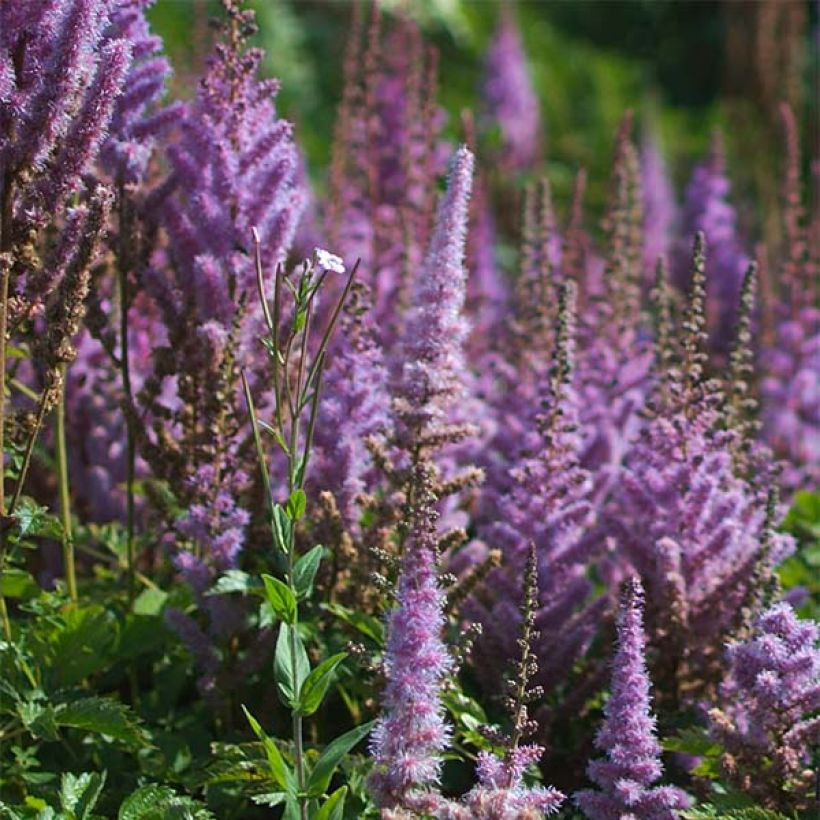

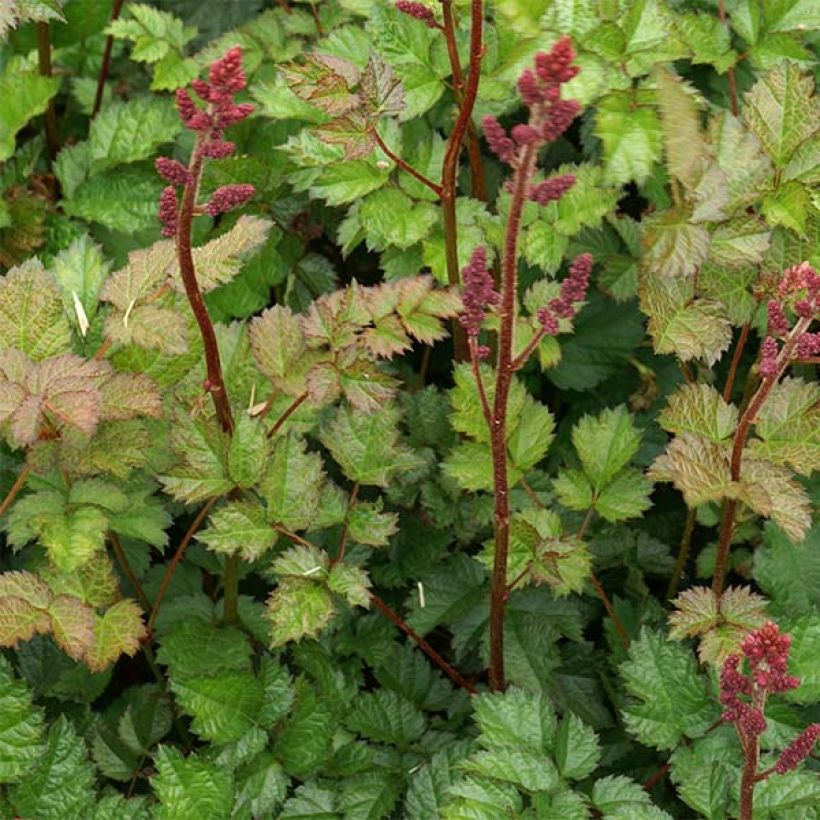

Flowering
Foliage
Plant habit
Botanical data
Astilbe
chinensis var. taquetii
Purpurlanze
Saxifragaceae
Chinese Astilbe, False Spirea
Cultivar or hybrid
Other Astilbe - False Goatsbeard
Planting and care
Astilbe chinensis Purpurlanze prefers to be planted in moist and heavy soil, in partial shade. It will tolerate moist soil but not dry, and a sunny exposure if it is filtered. It does not tolerate very chalky soils well and particularly appreciates soils rich in humus. Optionally add compost in spring, or a complete fertiliser rich in potash, to promote abundant flowering. It is a perennial that is not afraid of the cold, being perfectly hardy down to at least -20 °C. Furthermore, it is not sensitive to diseases and has few natural enemies. At the end of flowering, you can cut the faded stems to allow the clump to regenerate.
Planting period
Intended location
Care
-
, onOrder confirmed
Reply from on Promesse de fleurs
Aquatic plants
Haven't found what you were looking for?
Hardiness is the lowest winter temperature a plant can endure without suffering serious damage or even dying. However, hardiness is affected by location (a sheltered area, such as a patio), protection (winter cover) and soil type (hardiness is improved by well-drained soil).

Photo Sharing Terms & Conditions
In order to encourage gardeners to interact and share their experiences, Promesse de fleurs offers various media enabling content to be uploaded onto its Site - in particular via the ‘Photo sharing’ module.
The User agrees to refrain from:
- Posting any content that is illegal, prejudicial, insulting, racist, inciteful to hatred, revisionist, contrary to public decency, that infringes on privacy or on the privacy rights of third parties, in particular the publicity rights of persons and goods, intellectual property rights, or the right to privacy.
- Submitting content on behalf of a third party;
- Impersonate the identity of a third party and/or publish any personal information about a third party;
In general, the User undertakes to refrain from any unethical behaviour.
All Content (in particular text, comments, files, images, photos, videos, creative works, etc.), which may be subject to property or intellectual property rights, image or other private rights, shall remain the property of the User, subject to the limited rights granted by the terms of the licence granted by Promesse de fleurs as stated below. Users are at liberty to publish or not to publish such Content on the Site, notably via the ‘Photo Sharing’ facility, and accept that this Content shall be made public and freely accessible, notably on the Internet.
Users further acknowledge, undertake to have ,and guarantee that they hold all necessary rights and permissions to publish such material on the Site, in particular with regard to the legislation in force pertaining to any privacy, property, intellectual property, image, or contractual rights, or rights of any other nature. By publishing such Content on the Site, Users acknowledge accepting full liability as publishers of the Content within the meaning of the law, and grant Promesse de fleurs, free of charge, an inclusive, worldwide licence for the said Content for the entire duration of its publication, including all reproduction, representation, up/downloading, displaying, performing, transmission, and storage rights.
Users also grant permission for their name to be linked to the Content and accept that this link may not always be made available.
By engaging in posting material, Users consent to their Content becoming automatically accessible on the Internet, in particular on other sites and/or blogs and/or web pages of the Promesse de fleurs site, including in particular social pages and the Promesse de fleurs catalogue.
Users may secure the removal of entrusted content free of charge by issuing a simple request via our contact form.
The flowering period indicated on our website applies to countries and regions located in USDA zone 8 (France, the United Kingdom, Ireland, the Netherlands, etc.)
It will vary according to where you live:
- In zones 9 to 10 (Italy, Spain, Greece, etc.), flowering will occur about 2 to 4 weeks earlier.
- In zones 6 to 7 (Germany, Poland, Slovenia, and lower mountainous regions), flowering will be delayed by 2 to 3 weeks.
- In zone 5 (Central Europe, Scandinavia), blooming will be delayed by 3 to 5 weeks.
In temperate climates, pruning of spring-flowering shrubs (forsythia, spireas, etc.) should be done just after flowering.
Pruning of summer-flowering shrubs (Indian Lilac, Perovskia, etc.) can be done in winter or spring.
In cold regions as well as with frost-sensitive plants, avoid pruning too early when severe frosts may still occur.
The planting period indicated on our website applies to countries and regions located in USDA zone 8 (France, United Kingdom, Ireland, Netherlands).
It will vary according to where you live:
- In Mediterranean zones (Marseille, Madrid, Milan, etc.), autumn and winter are the best planting periods.
- In continental zones (Strasbourg, Munich, Vienna, etc.), delay planting by 2 to 3 weeks in spring and bring it forward by 2 to 4 weeks in autumn.
- In mountainous regions (the Alps, Pyrenees, Carpathians, etc.), it is best to plant in late spring (May-June) or late summer (August-September).
The harvesting period indicated on our website applies to countries and regions in USDA zone 8 (France, England, Ireland, the Netherlands).
In colder areas (Scandinavia, Poland, Austria...) fruit and vegetable harvests are likely to be delayed by 3-4 weeks.
In warmer areas (Italy, Spain, Greece, etc.), harvesting will probably take place earlier, depending on weather conditions.
The sowing periods indicated on our website apply to countries and regions within USDA Zone 8 (France, UK, Ireland, Netherlands).
In colder areas (Scandinavia, Poland, Austria...), delay any outdoor sowing by 3-4 weeks, or sow under glass.
In warmer climes (Italy, Spain, Greece, etc.), bring outdoor sowing forward by a few weeks.

































